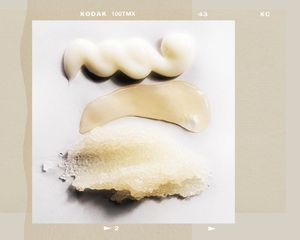
TJ Macke / Stocksy / Byrdie
Scalp itchiness can be painful or just plain annoying. Persistent scalp itching can lead to irritation and trauma to the skin barrier, so it's important to understand the cause of your itch and how to treat it. While itchiness is often caused by scalp dryness or dandruff, in more serious cases that include inflammation and painful pustules, scalp folliculitis may be the culprit.
Meet the Expert
- Dr. Snehal Amin, M.D., is a board-certified dermatologist and co-founder and surgical director of MDCS Dermatology in New York City.
- Dr. Michelle Henry, M.D., is a board-certified dermatologist and Mount Sinai and Harvard Trained Dermatologic/Mohs surgeon in New York City.
Unlike other scalp conditions like dandruff, scalp folliculitis often requires antibiotic or antiseptic treatments to improve. Some cases of folliculitis may resolve on their own, but others can progress to boils or even cellulitis without treatment. Scalp folliculitis and its side effects are intimidating, so we turned to the experts to understand the basics of scalp folliculitis and how to treat it.
Keep reading to hear from two dermatologists explain the causes and treatment of scalp folliculitis.
What is Scalp Folliculitis?
Scalp folliculitis is an inflammatory disorder of the hair follicle which often presents with small itchy pustules. "It looks like scalp acne and especially affects the frontal hairline of the scalp. It can be caused by inflammation associated with ingrown hairs or infection caused by bacteria, fungus or mites," explains Amin. Henry adds that most often, it causes symptoms like itch, redness and tender bumps located towards the front of the forehead.
It is also important to note that there are two main types of scalp folliculitis, according to Henry. The first is superficial folliculitis, which is mild and usually easily treatable, explains Henry. The second type is deep folliculitis, which causes deeper infections in hair follicles and can be harder to control.
Signs and Symptoms
Scalp folliculitis has the potential to persist or manifest into worse conditions without antibiotic or antiseptic treatments. Without treatment, bacterial folliculitis may progress into hard and painful lumps filled with pus, known as boils. Bacterial folliculitis and boils affect people worldwide, and have an important negative impact on quality of life. As such, it's important to understand what the signs and symptoms of this condition are in order to seek treatment.
- Small, itchy lesions: Scalp folliculitis often starts with small, itchy lesions along the front of the scalp. The itchiness can lead to further pain and infection, as scratching can introduce new bacteria to the now broken skin.
- Red, inflamed, and swollen skin: Scalp folliculitis can also present as red, inflamed, and swollen skin. Depending on the size and severity of the infection, it may present as a patch of the scalp versus an individual pustule.
- Burning or painful scalp: Henry cautions that scalp folliculitis may also cause the scalp to have a burning sensation or feel painful/tender to the touch.
- Whiteheads along the frontal hairline: The presence of small whiteheads along the frontal hairline are one of the clearest indicators of scalp folliculitis, especially in the presence of the other symptoms.
- Deep pustules: Depending on the type of scalp folliculitis, this may be a progression of the original whiteheads.
- Hair loss: While not an initial symptom, Henry warns that if scalp folliculitis becomes severe, it can cause hair loss. Meeting with a dermatologist to treat scalp folliculitis can help to prevent this outcome.
Common Causes of Scalp Folliculitis
Scalp folliculitis is an inflammation of the tiny pockets in our skin from which hairs grow (aka hair follicles). It occurs when bacteria infects the hair follicle. According to both of our experts, inflammation of hair follicles can be caused by certain bacteria, yeasts, fungus, and mites. "These include the microorganism species known as: Cutibacterium acnes, Staphylococcus aureus, Malassezia species, or Demodex folliculorum," explains Henry.
Henry also cautions that you’re more likely to get scalp folliculitis if you have a weakened immune system, have acne, have allergies or dermatitis, or if you take medications such as steroid creams. Additionally, those who have experienced scalp folliculitis before and are looking to prevent a reoccurrence may want to avoid certain behaviors/attire. "You should also avoid risk factors for scalp folliculitis including: shaving too much (especially with unclean razors), hot tubs, or wearing hats and headbands that trap sweat near your scalp," Henry explains.
Treatments
The course of treatment for scalp folliculitis can vary depending on the cause and severity of each individual case. Without consulting a dermatologist, there are some treatments you can attempt at home, but both of our experts caution that only a dermatologist will be able to determine what you're up against. Some treatments are simple behavior changes, whereas others are prescribed medications.
- Use a dandruff shampoo: Both of our experts recommend you try to wash your scalp and use anti-dandruff shampoos containing anti-fungal agents. These called ketoconazole or ciclopirox shampoos and Henry explains that they help remove yeast, oil and other microbes from around hair follicles, so inflammation and infections are reduced.
- Pick a natural antiseptic/anti-fungal: There are several essential oils and botanicals that are naturally antiseptic or anti-fungal. Amin recommends tea tree oil as an over the counter ingredient to look for when treating scalp folliculitis
- Avoid hot water: Scalp folliculitis causes inflammation of the scalp and irritation to the skin barrier. Amin recommends you use lukewarm temperature water rather than hot water for hair washing, as hot water aggravates itchiness and causes dryness of the skin. However, he does add that out of the shower, warm compresses are soothing and facilitate drainage of pustules.
- Use over-the-counter itch relief: The itchiness of scalp folliculitis may make it tempting to scratch, but this will only exacerbate your issues. Over the counter hydrocortisone cream and antihistamines are helpful to relieve symptoms of itching, shares Amin.
- Prescribed topical or oral antibiotics/anti-fungals: Other treatment options include using prescription topical antibiotics, such as gels or clindamycin solutions, shares Henry. "Sometimes a steroid lotion or cream might be needed to control inflammation. You can get a prescription for these products from your dermatologist if they’re needed," she explains. Amin agrees and adds that your dermatologist may prescribe an erythromycin or clindamycin solution or long term oral antibiotic tetracycline.
When to See a Physician
Scalp folliculitis can come on gradually and may not seem serious at first, especially if you have experienced scalp acne before. However, it is important to seek a dermatologist's opinion—especially if your symptoms persist. "If symptoms don’t resolve in a few days with home remedies, you should see a dermatologist to establish your diagnosis and treatment plan," explains Amin. "Correct diagnosis is important, for example, scalp folliculitis may be confused with other conditions such as scalp psoriasis or acne. In addition, there are therapies that are only available by prescription.
Henry agrees and adds, "If you try over-the-counter products for a couple weeks (about seven to 10 days) and your symptoms don’t get better, then visit your dermatologist for help."
The Takeaway
Scalp folliculitis is an itchy, painful, and sometimes serious condition of the scalp that can result in serious side effects if left untreated. If you suspect you may be suffering from scalp folliculitis, consider trying an anti-dandruff shampoo, but be sure to consult your dermatologist if symptoms persist longer than a week.

















